Health concerns are paramount at this point, with the positive coronavirus tests of players and staffers around Major League Baseball -- specifically the growing number of St. Louis Cardinals testing positive -- at the forefront of our minds.
Once we take a step into the news and developments of the early season from on the field, there are some interesting performances, improvements, roster moves and big-picture strategic concerns across the league to recap. It might not surprise you that I wrote much more than expected on these topics. Here are my top takeaways from the first couple of weeks of games -- focusing on each team in the National League. Stats are through Thursday's games.
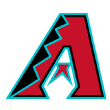 Top 100 prospect catcher Daulton Varsho (son of former big leaguer Gary) was called up for his MLB debut last month, and he'll be worked in at a number of positions, with left field, second base, designated hitter and catcher the most likely fits. Varsho is a uniquely skilled player with a strong, squatty frame and plus speed to go with plus contact skills but just fringy arm strength. Second baseman Andy Young (acquired in the Paul Goldschmidt deal) also made his big league debut, working in a platoon/bench role.
Top 100 prospect catcher Daulton Varsho (son of former big leaguer Gary) was called up for his MLB debut last month, and he'll be worked in at a number of positions, with left field, second base, designated hitter and catcher the most likely fits. Varsho is a uniquely skilled player with a strong, squatty frame and plus speed to go with plus contact skills but just fringy arm strength. Second baseman Andy Young (acquired in the Paul Goldschmidt deal) also made his big league debut, working in a platoon/bench role.
The rest of the news hasn't been that great. The D-backs have the second-worst run differential in the league, driven by the third-most runs allowed in the league. LHP Robbie Ray has a 9.45 ERA through three outings and none of the ERA estimators suggest that he has been especially unlucky. LHP Madison Bumgarner has been equally bad in the early going but is even more worrisome because Arizona just gave him $85 million and his velocity is the lowest of his career (88.0 mph on average), while his fastball usage is falling to near career lows (38%). The D-backs' playoff odds since Opening Day have fallen from 47% to 26%, the third-biggest drop.
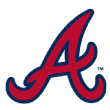
With the unfortunate loss of RHP Mike Soroka for the season, the demotion of struggling RHP Mike Foltynewicz and the continued absence of LHP Cole Hamels, the Braves' pitching depth is being tested. Youngsters like RHP Touki Toussaint and RHP Kyle Wright that started the year in swing roles have been pushed into the rotation, and Toussaint rose to the occasion in Thursday's start (6.2 IP, 0 BB, 9 K). The Braves have been solid so far, with the fourth-biggest gain in playoff odds since Opening Day, per FanGraphs, improving from 72% to 89%.
There's still some depth left at the alternate site on both the hitting and pitching sides, but I wanted to focus more on the efficiency of the remaining core parts of the pitching staff, with an assist from Baseball Savant/StatCast. The Braves have three of the top 10 pitchers in the league when it comes to changeup sink (RHP Shane Greene, LHP Chris Rusin, RHP Chris Martin), and Toussaint is also top 10 in sink among all splitters. Among pitchers who have thrown at least 20 sliders this year, the Braves have three of the top eight in sink (LHP Sean Newcomb, RHP Luke Jackson, LHP Tyler Matzek), along with three of the top six in most spin-efficient curveballs (Newcomb, LHP Max Fried, Toussaint).
The commonalities here are all tied to sink, which correlates to swing-and-miss heavily with off-speed pitches but also serves another purpose that progressive clubs are trying to do: differentiate their pitches. A mix of otherwise average pitches that have very different movement profiles (i.e. big-breaking curveball, rising four-seam fastball, lateral-breaking slider, etc.) from the same arm slot helps those pitches play up in real situations since the hitters are less likely to make contact if they guess incorrectly.
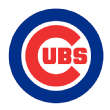 Right-hander Tyler Chatwood looked like an awful investment through the second season of his three year, $38 million deal (0.2 WAR through 180⅓ IP and 25 starts) but is off to a fast start this season (0.5 WAR though 15 IP and three starts). His velocity is actually down a tick (mainly due to shifting from primarily pitching as a reliever to working as a starter), but the main difference is his cutter (90.5 mph on average) usage jumping from 10% to 30%, while fastball (94.4 mph average) usage dropped accordingly from 71% to 50%.
Right-hander Tyler Chatwood looked like an awful investment through the second season of his three year, $38 million deal (0.2 WAR through 180⅓ IP and 25 starts) but is off to a fast start this season (0.5 WAR though 15 IP and three starts). His velocity is actually down a tick (mainly due to shifting from primarily pitching as a reliever to working as a starter), but the main difference is his cutter (90.5 mph on average) usage jumping from 10% to 30%, while fastball (94.4 mph average) usage dropped accordingly from 71% to 50%.
These new usages are back to what Chatwood had been doing with his pitch mix in 2016-18, though he now throws his fastball and cutter a bit harder. Chatwood's 2020 cutter has the 12th-most cut in the league (2.7 inches), while the 2019 incarnation had the 45th-most cut (1.0 inches) and the 2020 version also added an inch of sink. The increased movement, velocity and usage all appear to be driving the better outcomes in the early going, with the 47% whiff rate on the cutter so far rating as a career high.
Chatwood has been arguably the biggest outperformer in what has been a great start to the season for Chicago, with the second-biggest playoff odds gain in the league from Opening Day: from 71% to 93%.
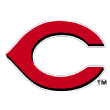 I said in my rookie impact preview that Tyler Stephenson was on the 40-man but was technically the fourth catcher after Kyle Farmer and didn't have Triple-A experience, so he may not see the big leagues this year. He came up for one game and hit a homer, going 2-for-2 with a walk. That might be all the time he gets this year, but a 3.500 OPS sure counts as impact, so I'll take my lumps on that prediction.
I said in my rookie impact preview that Tyler Stephenson was on the 40-man but was technically the fourth catcher after Kyle Farmer and didn't have Triple-A experience, so he may not see the big leagues this year. He came up for one game and hit a homer, going 2-for-2 with a walk. That might be all the time he gets this year, but a 3.500 OPS sure counts as impact, so I'll take my lumps on that prediction.
The even more impactful development with the big league club is the changing pitching staff. The Reds went whole hog into DriveLine this offseason, hiring Kyle Boddy, and it already shows on the big league roster, though some of these initiatives and preferences were in place before that hire. Broadly speaking, DriveLine is a training facility in Kent, Washington, that focuses on enhancing pitcher performance. It's closely associated with weighted balls as part of programs to add velocity and pitch design to get the most spin and life from pitches. RHP Trevor Bauer has used it for years.
Per Baseball Savant, among all big league pitchers (deep breath), RHP Tyler Mahle has the most spin-efficient fastball in the league (100.0%), Bauer and RHP Sonny Gray are in the top four of slider horizontal movement, Bauer is fourth overall in curveball sink, Gray and Bauer have the two most spin-efficient sliders and also two of the 10 most efficient curveballs. The Reds also have the second-highest fastball velocity as a club (94.6 mph), just behind the Dodgers.
Outcomes haven't been as good, with Cincinnati suffering the fifth-sharpest decrease in playoff odds since Opening Day, down from 65% to 50%.
 As measured by playoffs odds, the Rockies are the biggest surprise in baseball. They've gained 37% in playoff probability since Opening Day, now sitting at 66% to qualify for the expanded playoffs after a 9-3 start. It also hasn't been that fluky, with the third-best win differential and tied for the fourth-best winning percentage. It remains to be seen if this can continue, but they've been legitimately good so far.
As measured by playoffs odds, the Rockies are the biggest surprise in baseball. They've gained 37% in playoff probability since Opening Day, now sitting at 66% to qualify for the expanded playoffs after a 9-3 start. It also hasn't been that fluky, with the third-best win differential and tied for the fourth-best winning percentage. It remains to be seen if this can continue, but they've been legitimately good so far.
The Rockies have the third-highest average velocity in baseball (94.4 mph), the seventh-highest ground ball rate (45%) and the highest slider usage (27%) in baseball, all signs that they are following their long-term broad approach due to their high-altitude home stadium: sinkers and sliders (grounders, shorter break that's less affected by altitude), rather than four-seamers and curveballs (fly balls, bigger break).
 You might have thought shortstop Corey Seager's hot start (15th in WAR, 17th in wRC+) was just the result of another good player playing a little better than normal in a short stretch, maybe with some luck helping him. In fact, Seager has been the third-most unlucky hitter in baseball, because Baseball Savant's expected statistics have him pegged as 65 points of wOBA better than any other hitter in baseball (minimum 25 PA). Seager's raw hitting line is .347/.396/.612, good for a 1.008 OPS and .430 wOBA (.303 wOBA is MLB average). His expected line is .459/.508/.955, good for a 1.463 OPS and .593 wOBA. That's quite a bounce-back from his 2018 injury and then a 2019 season coming back from Tommy John surgery that wasn't quite up to his MVP-level seasons of 2016 and 2017. Hopefully his exit from Friday's game for lower back discomfort isn't a big deal.
You might have thought shortstop Corey Seager's hot start (15th in WAR, 17th in wRC+) was just the result of another good player playing a little better than normal in a short stretch, maybe with some luck helping him. In fact, Seager has been the third-most unlucky hitter in baseball, because Baseball Savant's expected statistics have him pegged as 65 points of wOBA better than any other hitter in baseball (minimum 25 PA). Seager's raw hitting line is .347/.396/.612, good for a 1.008 OPS and .430 wOBA (.303 wOBA is MLB average). His expected line is .459/.508/.955, good for a 1.463 OPS and .593 wOBA. That's quite a bounce-back from his 2018 injury and then a 2019 season coming back from Tommy John surgery that wasn't quite up to his MVP-level seasons of 2016 and 2017. Hopefully his exit from Friday's game for lower back discomfort isn't a big deal.
I touched on Chatwood's improved cutter in the Cubs segment, and the Dodgers have arguably the two best cutters in baseball. Right-handers Kenley Jansen and Walker Buehler have the cutters with the 10th- and 16th-most sink in baseball but are the only ones in the top 16 in terms of sink that also have an above-average amount of cut as well. Buehler and Jansen are fifth and seventh in terms of cut, making the overall life of those two pitches the leaders among all cutters.
 The Marlins have had a well-documented struggle trying to control the spread of the coronavirus in the clubhouse but have stabilized and started playing games again. These conditions have forced a more motley crew for a big league roster than many would have expected. The starting second baseman is a former Olympic speedskater (Eddy Alvarez), and the guy he's platooning with (Logan Forsythe) was signed last week after being granted his release when he didn't make the Phillies' Opening Day roster. Top prospect Monte Harrison is up earlier than expected, former top prospect Lewis Brinson is back up and in a platoon despite being one of the worst hitters in MLB history thus far in his career (207 career games, .182/.237/.290), 34-year-old catcher Francisco Cervelli is now the starter at the tail end of a career dogged by durability concerns, and Friday's starting pitcher, RHP Humberto Mejia, hadn't pitched above High-A in his career. Despite all this, the Marlins are somehow 6-1, and their playoffs odds are up 12% since Opening Day, now up to 21%.
The Marlins have had a well-documented struggle trying to control the spread of the coronavirus in the clubhouse but have stabilized and started playing games again. These conditions have forced a more motley crew for a big league roster than many would have expected. The starting second baseman is a former Olympic speedskater (Eddy Alvarez), and the guy he's platooning with (Logan Forsythe) was signed last week after being granted his release when he didn't make the Phillies' Opening Day roster. Top prospect Monte Harrison is up earlier than expected, former top prospect Lewis Brinson is back up and in a platoon despite being one of the worst hitters in MLB history thus far in his career (207 career games, .182/.237/.290), 34-year-old catcher Francisco Cervelli is now the starter at the tail end of a career dogged by durability concerns, and Friday's starting pitcher, RHP Humberto Mejia, hadn't pitched above High-A in his career. Despite all this, the Marlins are somehow 6-1, and their playoffs odds are up 12% since Opening Day, now up to 21%.
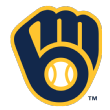 There has been a lot of hay made about OF Christian Yelich's weak start, but things are not as grim as they appear, even in this small sample. Among players with 40 plate appearances, Yelich is 22nd-worst in baseball in wRC+ (an all-inclusive stat for what a hitter does at the plate) out of 131 qualified hitters, at 62 (i.e., 38% below-league-average hitter when adjusted for league and park). Last year he was third in baseball at the same stat (174 wRC+).
There has been a lot of hay made about OF Christian Yelich's weak start, but things are not as grim as they appear, even in this small sample. Among players with 40 plate appearances, Yelich is 22nd-worst in baseball in wRC+ (an all-inclusive stat for what a hitter does at the plate) out of 131 qualified hitters, at 62 (i.e., 38% below-league-average hitter when adjusted for league and park). Last year he was third in baseball at the same stat (174 wRC+).
When using Baseball Savant's expected statistics (this strips the luck out of batted-ball outcomes, using the odds of a hit of a batted ball rather than the actual outcome), which are especially useful in smaller samples, Yelich comes out much better, suggesting he's been a victim of bad luck. He ranks 157th out of 215 qualifiers -- still bad, but basically league average -- and that big gap of production vs. expected production (58 points of wOBA, a similar all-inclusive hitting stat) is still not even in the top 50 of least lucky stat lines, underlining how random small samples can be.
On the defensive end of things, C Omar Narvaez has made strides in reversing his stone-handed reputation. His Baseball Savant framing figures (i.e., how many strikes he steals/loses by presentation to the umpire) has been negative in each of the past four years, totaling minus-23 runs, or over two wins. FanGraphs numbers peg that figure at minus-22.4 runs over the same stretch, with minus-20.4 of it in just the last two years. Only Savant has framing figures for the 56 innings Narvaez has caught this year, but the early indications are very positive: He leads all of baseball with plus-1 run and a 65% strike rate, a number that leads the league. His career is full of seasons in the mid-40s every year, which would be in the bottom five to 10 in the league. It's obviously far too small of a sample to think he has actually gone, in terms of true talent level, from essentially worst in the league to best in the league, but a Brewers source indicated that he has clearly improved and that the Brewers acquired him with the thought that he would improve under their tutelage. He's got a funky hitting line, as many players do with just 28 plate appearances, but he's hitting at the league average clip that he's maintained most of his career.
 In my rookie impact preview, I mentioned that I thought shortstop Andres Gimenez might be more of a 2021 option than 2020. Similar to the Reds' Stephenson, though, the Mets called him up after injuries to Robinson Cano, Eduardo Nunez and Jed Lowrie. The slick-gloved shortstop is playing second base, but that may be the case for the medium term with Amed Rosario manning shortstop, though Rosario is off to a slow offensive start. Gimenez has performed like his scouting reports would suggest, with an advanced feel for contact, a pretty aggressive approach and limited punch to go with an advanced glove and baserunning instincts.
In my rookie impact preview, I mentioned that I thought shortstop Andres Gimenez might be more of a 2021 option than 2020. Similar to the Reds' Stephenson, though, the Mets called him up after injuries to Robinson Cano, Eduardo Nunez and Jed Lowrie. The slick-gloved shortstop is playing second base, but that may be the case for the medium term with Amed Rosario manning shortstop, though Rosario is off to a slow offensive start. Gimenez has performed like his scouting reports would suggest, with an advanced feel for contact, a pretty aggressive approach and limited punch to go with an advanced glove and baserunning instincts.
The season as a whole hasn't gone that well, with a 5-8 start, the 24th-best run differential and playoffs odds cratering 18% since Opening Day, down to a true coin flip at 50.5%. There is still one thing that can keep Mets fans excited about their club, because have you seen what Jacob deGrom is doing?
His top-line numbers are great as usual: 17 innings over three starts, 2.21 ERA, 0.7 WAR. He's second in baseball in average fastball velocity at 98.8 mph, behind only Dodgers reliever Brusdal Graterol. Beyond that, deGrom also leads baseball in hardest average slider velocity at 93.2 mph, and he's third in average changeup velocity at 91.5 mph. I'll skip the part where I figure out how many big league fastballs all three of deGrom's main pitches are harder than, but it's more than a few poor souls. Actually, I'm too curious, so I looked it up: 124 of the 526 pitchers (23.5%) that have thrown in 2020 have an average fastball velocity lower than that of deGrom's changeup. Almost a quarter of the league!
 The Phillies haven't played as many games due to enhanced testing after a game with the Marlins, but two early developments stood out to me. The first is that the Phillies are eighth as a club in fastball usage (55%) and 28th in breaking ball usage (22%), so it then follows that they're fifth in changeup/splitter usage (18%). This stands out just because it's even more extreme than last year and it runs counter to the typical progressive approach of heavily using breaking balls to maximize swing-and-miss rates, often at the expense of fastballs, which have the lowest whiff rates of any pitch. The Phillies have added more power to the staff, jumping from 26th (92.5 mph) in average fastball velocity to ninth (93.4 mph) in the early going this year.
The Phillies haven't played as many games due to enhanced testing after a game with the Marlins, but two early developments stood out to me. The first is that the Phillies are eighth as a club in fastball usage (55%) and 28th in breaking ball usage (22%), so it then follows that they're fifth in changeup/splitter usage (18%). This stands out just because it's even more extreme than last year and it runs counter to the typical progressive approach of heavily using breaking balls to maximize swing-and-miss rates, often at the expense of fastballs, which have the lowest whiff rates of any pitch. The Phillies have added more power to the staff, jumping from 26th (92.5 mph) in average fastball velocity to ninth (93.4 mph) in the early going this year.
The other important development is Rhys Hoskins' mustache. I mean look at that thing:
1970's Rhys Hoskins love it! 😄 pic.twitter.com/OiRGrtBRG4
— UK Phillies (@UkPhillies) July 1, 2020
 What looked like it might be a non-competitive season has gone a little worse than expected so far. The potential youth movement led by top prospects Mitch Keller (injury) and Ke'Bryan Hayes (still at the alternate site) hasn't materialized. Part-time shortstop Cole Tucker is the only player on the active roster under 25, which is disconcerting for a club in a last-place season while rebuilding.
What looked like it might be a non-competitive season has gone a little worse than expected so far. The potential youth movement led by top prospects Mitch Keller (injury) and Ke'Bryan Hayes (still at the alternate site) hasn't materialized. Part-time shortstop Cole Tucker is the only player on the active roster under 25, which is disconcerting for a club in a last-place season while rebuilding.
Keller would be the other when he comes off the IL, but the next wave of talent other than Hayes (SS Oneil Cruz, SS Liover Peguero, 2B Nick Gonzales, CF Travis Swaggerty, RHP Quinn Priester, RHP Tahnaj Thomas, RHP Brennan Malone, CF Jared Oliva) are likely not options for 2020. This is a season to figure out which marginal players are keepers, then start plugging in young talent starting in 2021. While they started the season with the sixth-worst playoff odds in baseball (14%), that's now dropped to the worst in baseball at 2% with the 3-10 start.
 Because of the ongoing COVID-19 positive tests, the Cardinals have played only five games. Due to a 2-3 start and the Cubs' blazing start, the Cards have lost 10% from their playoff odds (58% to 48%) since Opening Day. As Mark Saxon points out, if they end up playing a full 60-game season, the Cards will play 55 games in 49 days, possibly even less depending on when they can get back on the field. With key players out due to positive tests and others due to other injuries, the roster is being stretched to field a club. As mentioned in the intro, the health and safety of the players is paramount, making the logistics of juggling all of these concerns trickier by the day.
Because of the ongoing COVID-19 positive tests, the Cardinals have played only five games. Due to a 2-3 start and the Cubs' blazing start, the Cards have lost 10% from their playoff odds (58% to 48%) since Opening Day. As Mark Saxon points out, if they end up playing a full 60-game season, the Cards will play 55 games in 49 days, possibly even less depending on when they can get back on the field. With key players out due to positive tests and others due to other injuries, the roster is being stretched to field a club. As mentioned in the intro, the health and safety of the players is paramount, making the logistics of juggling all of these concerns trickier by the day.
 The Padres are a young, exciting team and has been for at least two seasons now. Chris Paddack has dramatically improved his curveball (adding an extra 4.9 inches of vertical break, also throwing it 1.4 mph harder), to go with one of the best changeups in the game and a fastball that averages 94.6 mph. Shortstop Fernando Tatis Jr. may be the most electric player in the game: He has the highest hard-hit rate (95+ mph exit velocity) of anyone in baseball with at least 25 balls in play (67%), and his sprint speed -- think spurts of speed on the bases -- is third best in baseball at 29.1 feet per second.
The Padres are a young, exciting team and has been for at least two seasons now. Chris Paddack has dramatically improved his curveball (adding an extra 4.9 inches of vertical break, also throwing it 1.4 mph harder), to go with one of the best changeups in the game and a fastball that averages 94.6 mph. Shortstop Fernando Tatis Jr. may be the most electric player in the game: He has the highest hard-hit rate (95+ mph exit velocity) of anyone in baseball with at least 25 balls in play (67%), and his sprint speed -- think spurts of speed on the bases -- is third best in baseball at 29.1 feet per second.
These are well-known players and players whose physical tools you can see pretty easily. Two lesser-known players with standout StatCast figures are RHP Garrett Richards and OF Trent Grisham.
Richards was a buy-low free-agent signing, and San Diego gave him a two-year, $15.5 million deal knowing that he wouldn't pitch much in the first year of the deal (he pitched 8⅔ innings). This year he's back, and he brought his goofy curveball movement with him. He has the most vertical movement in the league (as compared to other curveballs of similar velocity) at 11.8 inches above average and also has above-average horizontal movement, giving him the most overall movement on the pitch. This comes from his league-leading 3,327 rpm average spin rate on the pitch that is crushing everyone else in baseball. The next-highest spin rate is Sonny Gray at 2,987, then Charlie Morton at 2,867.
Grisham doesn't have goofy figures in that traditional, check-out-this-insane-spin-rate-or-exit-velo sort of way, but he may be more meaningful in terms of predicting a strong season. Savant tracks home runs as No Doubters (out of the yard at all 30 stadiums), Mostly Gone (8 to 29) and Doubters (7 or fewer). Grisham has hit four homers already this year in a solid start to the season but is the only hitter in baseball with four or more homers and all of them No Doubters, and he also had a non-homer that was a Mostly Gone, meaning it would usually be a homer. An advanced hitter with a strong feel for the zone, he feels like a buy-low for fantasy players.
 I've mentioned that for a few rebuilding clubs, the optimal strategy is to take advantage of their available playing time, poor talent base and low payroll by taking lots of gambles on marginal players to see if they can stumble into a few unexpected pieces for their next playoff club. The Giants are employing that strategy and are using expanded rosters to also try to win as many games as they can while doing it. At one point last week, FanGraphs' Jason Martinez pointed out that the Giants were employing six platoons in their nine lineup spots, the most he'd ever seen in his years of obsessively tracking lineup usage. When you've got a roster full of marginal players with a standout skill or two each, platoons are by far the best way to emphasize those strengths without overextending players into disadvantageous situations, though the old 25-man roster always limited how many platoons a club could use.
I've mentioned that for a few rebuilding clubs, the optimal strategy is to take advantage of their available playing time, poor talent base and low payroll by taking lots of gambles on marginal players to see if they can stumble into a few unexpected pieces for their next playoff club. The Giants are employing that strategy and are using expanded rosters to also try to win as many games as they can while doing it. At one point last week, FanGraphs' Jason Martinez pointed out that the Giants were employing six platoons in their nine lineup spots, the most he'd ever seen in his years of obsessively tracking lineup usage. When you've got a roster full of marginal players with a standout skill or two each, platoons are by far the best way to emphasize those strengths without overextending players into disadvantageous situations, though the old 25-man roster always limited how many platoons a club could use.
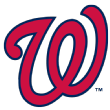 The Nationals are off to a strong run-prevention start to the season, but expect some regression. Max Scherzer and Patrick Corbin have excelled (combined 25⅔ IP, both with a FIP and xFIP in the low-to-mid-2.00s but ERAs in the low-3.00s), accounting for almost a third of the team's innings this year, and they've been a bit unlucky with results. On the other hand, the team as a whole has the third-best ERA in the league with xFIP and FIP, suggesting they should be around 20th in ERA, showing that the rest of the staff has been incredibly lucky so far. There's a huge gap in the outcomes and process from the bullpen, with a 1.53 ERA and ERA estimators pegging them for about 4.00 in a true-talent ERA. I know it's painful to watch a bullpen blow a lead, but it seems like the Nats are due for a few of those.
The Nationals are off to a strong run-prevention start to the season, but expect some regression. Max Scherzer and Patrick Corbin have excelled (combined 25⅔ IP, both with a FIP and xFIP in the low-to-mid-2.00s but ERAs in the low-3.00s), accounting for almost a third of the team's innings this year, and they've been a bit unlucky with results. On the other hand, the team as a whole has the third-best ERA in the league with xFIP and FIP, suggesting they should be around 20th in ERA, showing that the rest of the staff has been incredibly lucky so far. There's a huge gap in the outcomes and process from the bullpen, with a 1.53 ERA and ERA estimators pegging them for about 4.00 in a true-talent ERA. I know it's painful to watch a bullpen blow a lead, but it seems like the Nats are due for a few of those.
